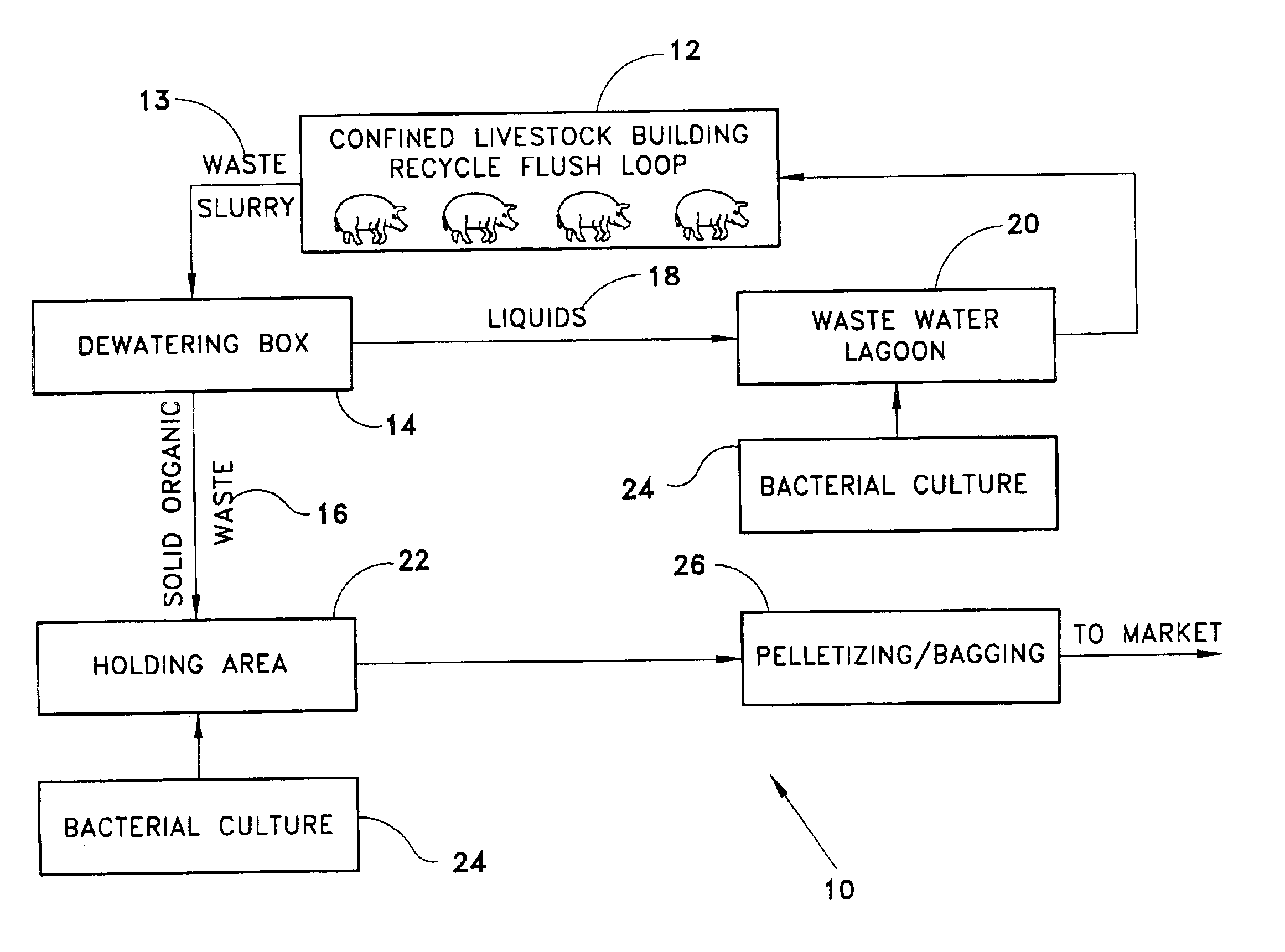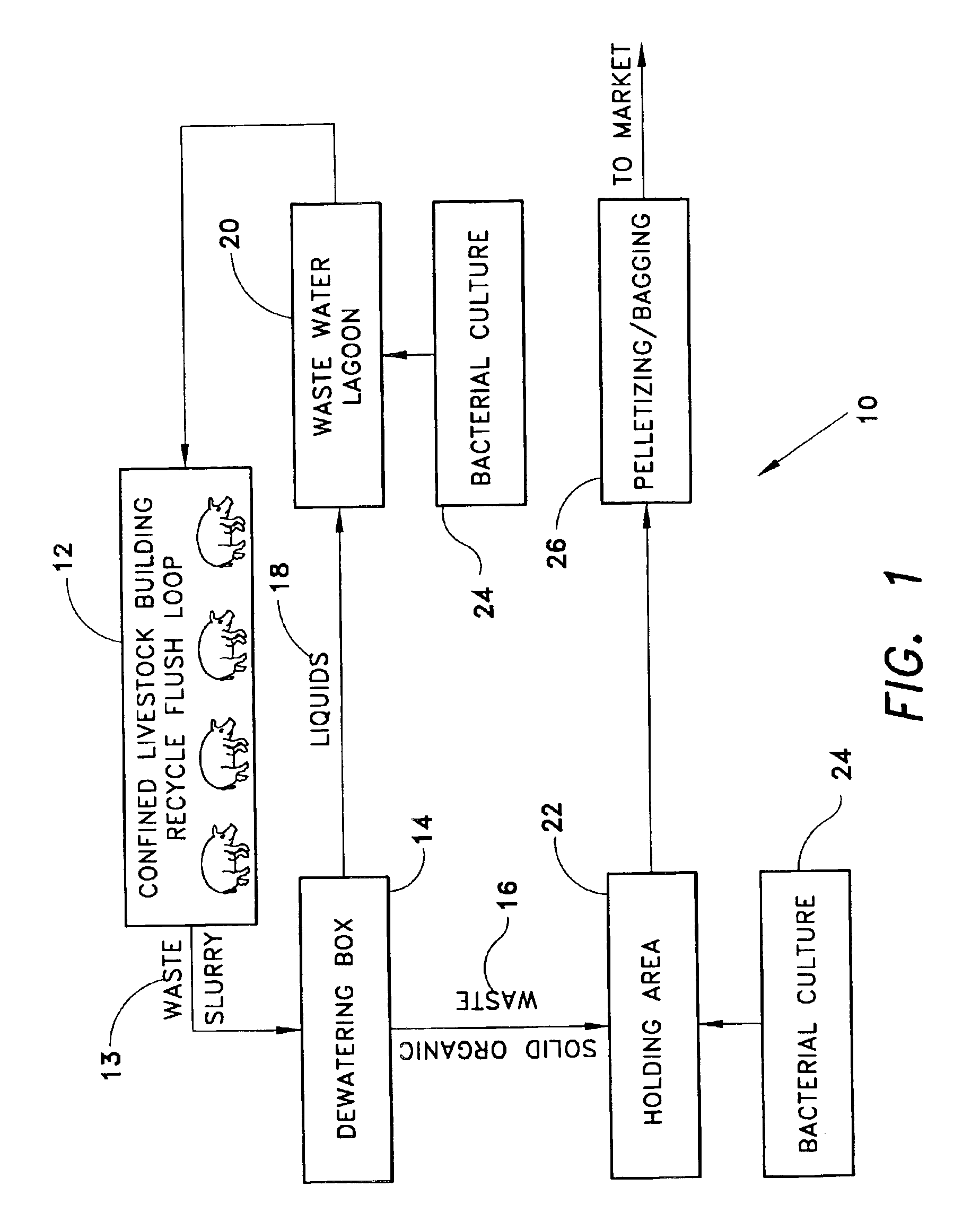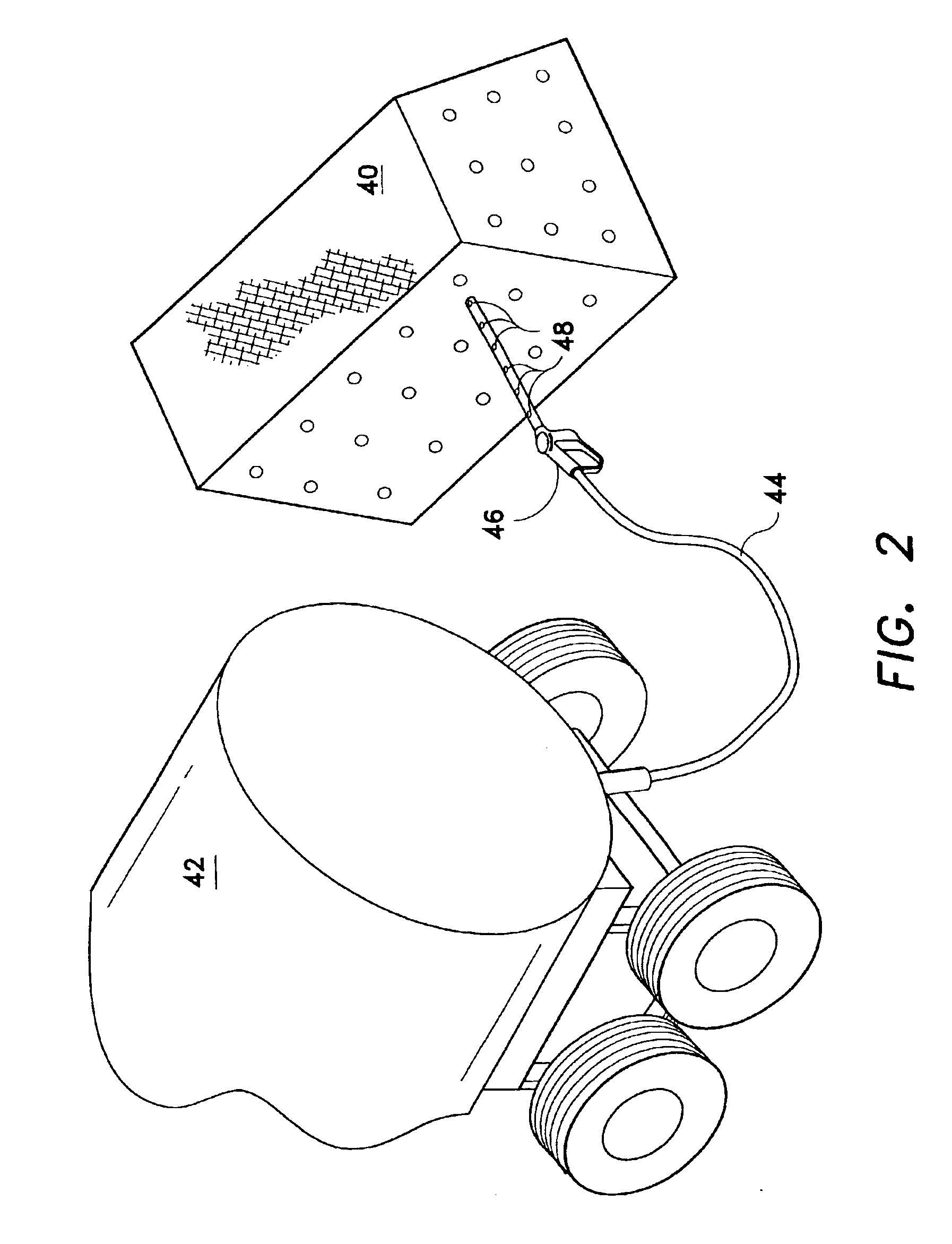Organic waste treatment method
- Summary
- Abstract
- Description
- Claims
- Application Information
AI Technical Summary
Benefits of technology
Problems solved by technology
Method used
Image
Examples
Embodiment Construction
[0033]The steps of the present invention, an organic waste treatment method 10, are described with reference to the components shown in the block diagram of FIG. 1. Block 12 represents an animal feeding facility such as a confined livestock building. Ordinarily, this type of building contains a number of animal pens, feeding apparatus, grated floors and pits. The animal waste precipitates through the grated floor into a collection area. Water is periodically used to flush the collection area free of animal waste thereby forming an animal waste slurry 13. The slurry is channeled into a pipe.
[0034]Block 14 is a divided phase separator or dewatering box which functions to separate the solid organic waste 16 (solid portion of the waste slurry) from the liquids 18 in the slurry 13 and store the solid waste 16. U.S. Pat. Nos. 5,589,081 and 6,004,461, both issued to Harris, disclose divided phase separators. The disclosure of the '081 and '461 patents to Harris are herein incorporated by r...
PUM
| Property | Measurement | Unit |
|---|---|---|
| Fraction | aaaaa | aaaaa |
| Fraction | aaaaa | aaaaa |
| Acidity | aaaaa | aaaaa |
Abstract
Description
Claims
Application Information
 Login to View More
Login to View More - R&D
- Intellectual Property
- Life Sciences
- Materials
- Tech Scout
- Unparalleled Data Quality
- Higher Quality Content
- 60% Fewer Hallucinations
Browse by: Latest US Patents, China's latest patents, Technical Efficacy Thesaurus, Application Domain, Technology Topic, Popular Technical Reports.
© 2025 PatSnap. All rights reserved.Legal|Privacy policy|Modern Slavery Act Transparency Statement|Sitemap|About US| Contact US: help@patsnap.com



